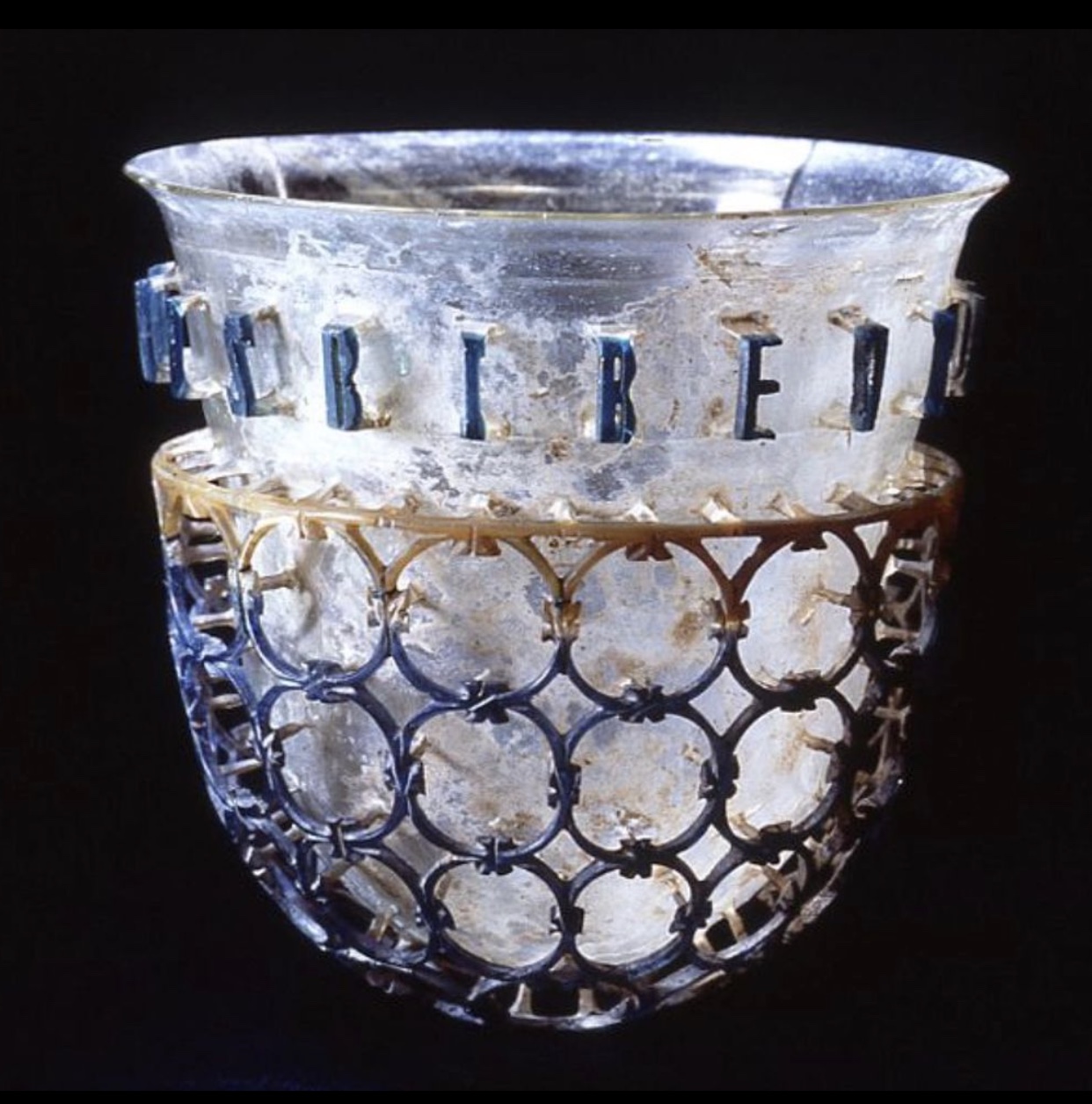Glass in antiquity is a funny thing. Unlike imported semi-precious stones, the material had no intrinsic value; instead, it was wholly based on the difficulty of technique used to work it and thus fluctuated based on technology from a luxury good to humdrum table-ware.
Shown here is one of the most fabulous and luxurious examples of ancient glass to have survived from Late Antiquity. Known as the “Trivulzio Cup”, it is currently in the Milan, having been discovered in a sarcophagus near Novara in 1680, and has attracted the attention of scholars since the 17th century (including the legendary J.J. Winckelmann) and for good reason.

Dating to the 4th century A.D., the Trivulzio Cup is an example of a cage cup (or vasa diatreta), named for that intricate decoration of interlocking circles in blue and yellow glass connected to the translucent beaker beneath by narrow bridges. Although it is still somewhat debated, experts generally agree that this effect was the achieved by carving and deeply undercutting a thick-walled glass beaker (blown or cast), as one would hard stone. Pretty tricky to pull-off without breaking the decoration or making hairline pressure cracks in the beaker walls.
The function of these cage cups have been somewhat debated in recent years as well. The majority have no associated base or stem and a notched, flaring rim, characteristics that have lead scholars to suggest perhaps they weren’t cups at all but rather oil lamps made for suspension. An intriguing suggestion.
The Trivulzio Cup leaves no such ambiguity, as beneath the rim an inscription in the same raised technique reads: “Drink May you live for many years” (‘BIBE VIVAS MVLTIS ANNIS’). Cheers!




